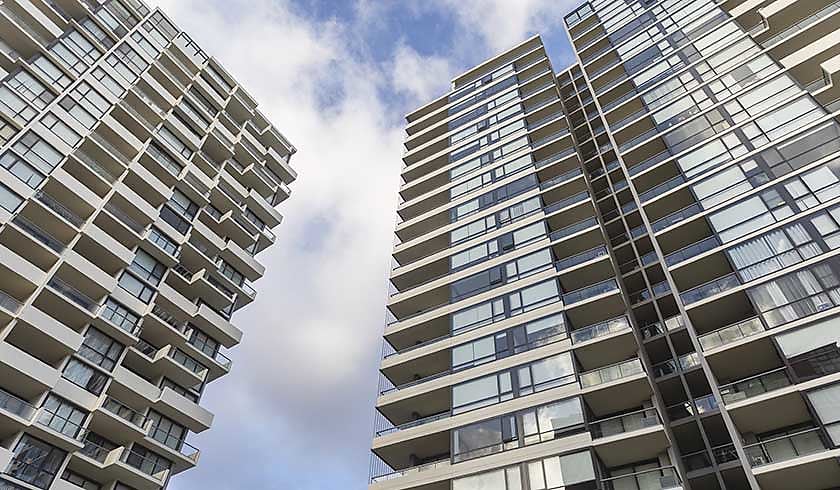Unit shortage looms as demand soars: CoreLogic
With medium- to high-density living increasing in popularity as more Australians desire inner-city residences, Australia must brace for a significant unit shortfall, according to CoreLogic.

They make up over one-quarter (25.9 per cent) of national housing stock, according to the research group’s new findings, and 30.4 per cent of capital city dwellings. However, unit builds are drying across the country in light of significant economic headwinds.
Several factors have inspired increased medium- to high-density dwelling demand, including location and limited land supply slowing the release of lower-density housing stock.
CoreLogic has also flagged the housing type’s affordability – the median value of an Australian unit is 30 per cent lower than houses – as well as their lower maintenance relative to houses.
“The medium- to high-density sector is increasingly becoming an important tool in delivering additional housing stock for Australia’s growing population, especially as households continue to congregate in metropolitan areas,” CoreLogic economist Kaytlin Ezzy explained.
However, delivery of units is expected to drop significantly in the coming years. Forecasts from the National Housing Finance and Investment Corporation (NHFIC) have Australia’s national housing deficit hitting 175,000 by 2027. Units are expected to make up 59 per cent, or just over 103,000 of this shortfall.
Ms Ezzy revealed 4,490 units were approved from construction in July, down 20 per cent on June’s level and nearly 40 per cent below the decade average.
Australian Bureau of Statistics approval data shows how, with the exception of a few months, “the trend in new unit approvals has largely held below the decade average since mid-2018, and well below the trend in house approvals since late 2017”, she added.
“In the past 10 years, units have accounted for approximately 41.7 per cent of total new housing completions nationally,” she said. “However, over the March quarter of 2023, units made up just 37.1 per cent of completions, holding 27.1 per cent below the decade average.”
All of this comes despite demand soaring, due in large part to caution being exercised by both developers and consumers faced with “uncertain economic conditions, weaker capital gains, high construction costs, a tight labour market for trades, and rising interest rates”.
“With fewer unit projects set to move through the construction pipeline, it’s likely completions will continue to ease, with units making up a smaller portion of new housing stock over the years,” Ms Ezzy detailed.
She did caveat these figures by revealing the pipeline of unit projects yet to be completed remains relatively high, with unit commencements up from 12,782 in the December 2022 quarter to just under 20,000 in the first quarter of this year.
“Constraints across the building sector have meant the number of units approved but yet to be completed has swelled to over 158,000 as of March this year,” she added.
And yet, even with this large pipeline of stock waiting for construction, Ms Ezzy noted, “both unit commencements and the total number of approved units in the pipeline yet to be completed remain below the highs of the mid-2010s”.
She explained demand pressures remain higher, largely driven by stronger-than-expected net overseas migration, which has increased demand across all sectors of the Australian housing market.
“Historically, ABS migration data shows high-density markets in major cities have had higher exposure to uplifts in net overseas migration,” she said.
“Looking at historic averages from 2016 onwards, the SA4 regions of Melbourne’s south-east, Melbourne inner, Sydney’s inner south-west, and Parramatta saw the highest net overseas migration levels.
“The majority of recent long-term migrant arrivals rent before buying. The impact of this additional demand has already been seen in the rental market, with capital city unit rents recording a new record-high annual growth rate over the year to May (16.5 per cent) before easing slightly over the 12 months to August (14.9 per cent).”
As a result, unit rents are likely to remain elevated for the foreseeable future, especially as net overseas migration looks likely to remain high for the remainder of this year as well as 2024.
For owner-occupier buyers and investors alike, units have long been viewed as an affordable entry point into the market. This was especially true in the apartment boom of the 2010s, which resulted in lowly growing annual rents of approximately 2 per cent across the country.
More recently, Ms Ezzy explained, “rising demand and record-low interest rates [means] the early 2020s has not been marked by the same uplift in unit construction”.
“At the moment, an elevated pipeline of units under construction, high-interest rates, and low consumer sentiment could temper unit demand and price growth,” she said.
However, once the pipeline is chewed through and Australia’s number of approved projects drops, Ms Ezzy believes the nation will be faced with a “temporary vacuum in new unit supply”.
“With the cash rate potentially easing in 2024, greater purchasing demand could fuel a stronger price boom in the unit market this time,” she concluded.
